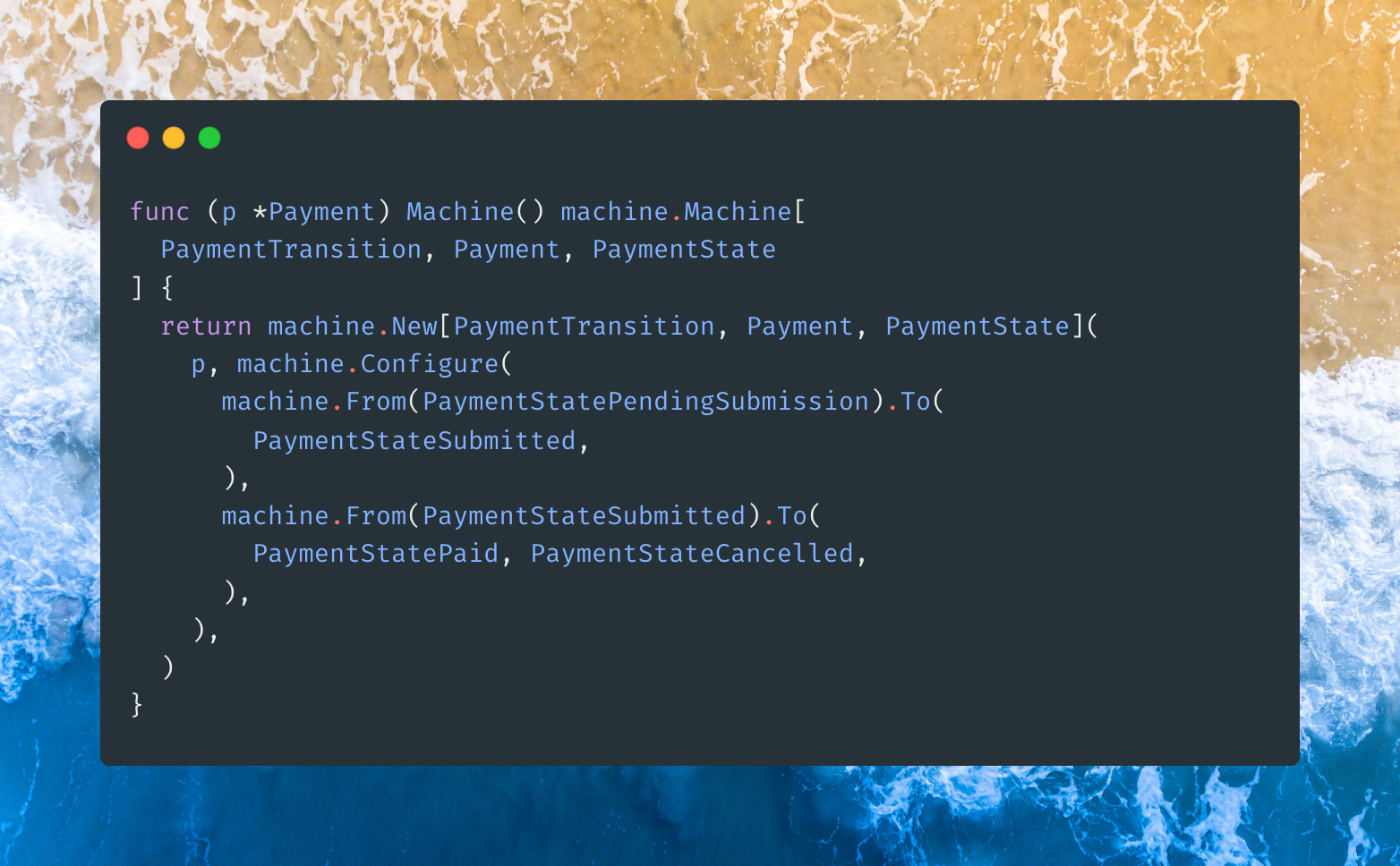Is it just me or is this a nightmare implementation in terms of software maintenance and operations? Each state transition requires a database trip, state machine transitions are determined at runtime and there’s no simple way to reproduce them locally, and in the case of the state machine database going down the system simply cannot work.
What exactly is the selling point of this approach?
It’s long running, so you want a database so you can store your state. If you’re storing state, locking it into a state machine makes sense.
I do agree with some of the commenters that making it closer to an event source design would make more sense still.
It’s long running, so you want a database so you can store your state. If you’re storing state, locking it into a state machine makes sense.
That’s besides the point. Of course that the most fitting way to represent a state machine is with a state machine. The point is that implementing the transition table in a database table creates many problems while apparently solving none.
I don’t understand why the
most_recentfield is needed. Surely the most recent state can be derived from the order field and the unique constraint on it can prevent concurrency issues if the previous sequence is taken before the state change. The benefit would be that the transition history table could then be append only.Yeah, I’m wondering that too. Also, why would a transition ever be updated? Should a successful transition not be a write-once operation? I guess it boils down to the finer details of the requirements of the application.
I think the most_recent is to power the unique index constraint. This “powers” the whole thing.
Whereas the sort_order is to allow easy sorting, which is just for human readability. You could argue that you can rely on the “created_at” for this.
Considering the examples increment it by 10, I assume this is to allow admins to manually override a sequence or force a data consistency thing or whatever.I think the most_recent is to power the unique index constraint. This “powers” the whole thing.
That much is clear, the question is: why is it needed at all? The sort key has the same uniqueness constraint, so there cannot be two entries with the same sort key value. So under which circumstances does the highest sort key value not reject the most_recent transaction?
I guess separation of concerns? One is for the system, one is for display?
A unique Boolean is easier to query than sorting and limiting?
Maybe you don’t ever need the ability to display a history, but you still want the history (instead of just making the transaction_id unique constrained)… so you just drop the sort_order column?
I understand what you are saying.
Maybe that’s just how they went about it. Originally planning on using created_at to do the ordering, then later realising that a customisable sort_order is required so they can make things make sense without having to fudge timestamps.
Neat! Thanks for sharing
Thank you for sharing.



